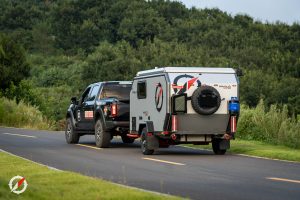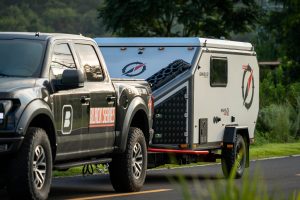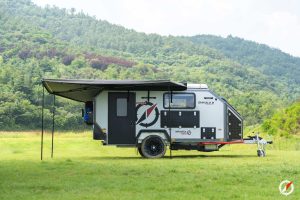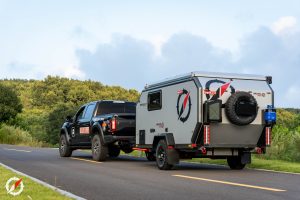This RV and I have had incredible adventures together, exploring amazing backcountry places like this over the years. It’s my favorite vehicle for solo trips because I know it like the back of my hand, and I have it outfitted perfectly for solo adventures. However, getting to this point has been a challenge. I’ve made many mistakes and learned numerous lessons along the way. In this video, I will share the most common mistakes that overlanders make—some of which I’ve made more than once.

I love this spot, especially when it’s overcast like this. It makes everything look so beautiful. Before we dive into the mistakes that new overlanders make, let’s first define what an overlander is. If I asked you that question, I’d likely get various answers. Some might say it’s someone who crosses entire continents by overlanding, while others might define it as someone who lives out of their vehicle full-time and has adventures. Others might say it’s someone who goes out for a week and has a great adventure out of their vehicle.

By definition, an overlander is someone who travels overland. The definition of “overland” is going or accomplishing something over the land instead of by sea. However, Webster’s definitions aren’t very helpful here. My interpretation of an overlander is someone who is self-sustained, goes into the backcountry, and has adventures. You’re exploring amazing places that are off the beaten path, and you’re living out of your vehicle. That’s a long definition, but it’s how I see it.
Now that we have a rough idea of what an Overlander is let’s talk about the mistakes that new Overlanders make—and yes, I’ve made every single one of these. The first mistake is not doing a shakedown run in your vehicle. What does that mean? When you outfit your vehicle for an adventure—adding suspension, a rooftop tent, a roof rack, or packing all your gear, including a refrigerator—you should take it out for a test run before committing to a long adventure. Go hit a trail for a day or spend a night somewhere to ensure you have everything you need and that your vehicle performs well. Check for strange rattles, ensure everything fits and works, and confirm that your suspension and other vehicle mechanics are functioning properly.
The last thing you want is to be on a long adventure—maybe one you’ve taken time off work for or are doing with friends—and then, on day two or three, run into problems. Maybe your vehicle isn’t handling well, you don’t like how it’s packed, or your fridge isn’t charging. These issues can arise if you don’t test everything beforehand. Anytime I modify my vehicle, I take it out on a trail to ensure everything is ready. So, always do a shakedown run before heading out on a big adventure. Before you go on your long overland adventure, there are several common mistakes to avoid. One of the most frequent errors new overlanders make is not staking down their awning. I don’t have an awning with me today, and hopefully, I won’t need one—though it does look a little ominous over there. I hope it doesn’t rain. However, an awning can be a great asset on multi-day adventures, whether for shelter from rain or sun. The problem is, you never know when a gust of wind might turn it into a sail, causing it to flap up and potentially break. This has happened to me before. I once stopped for lunch, quickly threw out the awning without staking it down, and sure enough, a gust of wind popped it up, breaking two of the hinges.

Many awnings have plastic hinge points designed to break as a safety feature, making them the weakest link. I’ve learned to carry extra hinges to fix them on the go if needed. Even when I’ve staked down my awning, sometimes it wasn’t enough. You need to secure it properly—use the guidelines, hammer the stakes down, and use deep, spiral stakes if you’re in the sand. Awnings are great, but I’ve seen too many people (myself included) end up with broken awnings because they didn’t stake them down properly.
Over time, I realized the importance of balance. You want your vehicle to be capable of handling off-grid adventures and obstacles but not so heavy that it exceeds its gross vehicle weight rating (GVWR). The lesson here is: don’t overbuild or bring gear you don’t need.
The next mistake is one I’ve made more than once—forgetting an essential item. There’s nothing more frustrating than getting out on the trail and realizing you forgot something critical, like coffee, propane, a lighter, or a headlamp. Forgetting coffee in the morning can ruin the rest of my day. To avoid this, I recommend creating a checklist. I keep everything packed full-time on my dedicated adventure vehicle, but I know that’s not practical for everyone. If your vehicle doubles as a daily driver, consider using packing boxes or a system that allows you to load and unload your gear easily. The last thing you want is to be ready to cook dinner and realize you forgot the propane—yes, that’s happened to me.

Another critical mistake is not paying attention to the weather. This one can be downright dangerous. It’s essential to know the weather conditions for your destination and how they might change. Weather can vary significantly, especially if camping at higher elevations than the nearest weather station. Temperatures can drop, and rain or snow can appear unexpectedly. I always check the weather before and during my trips. Even today, though it might rain, the forecast says it shouldn’t. But I’d still closely watch it if I were camping here. Mother Nature is unpredictable, so always be prepared with the right clothing. I carry jackets, gloves, beanies, and a rain jacket year-round, even in the summer. You never know what conditions you’ll encounter. It’s easy to get caught up in the excitement of overlanding and forget about the little things, like enjoying your coffee while chatting with you all. But let’s dive into another common mistake new overlanders make—one I’ve made repeatedly and now pay close attention to: driving too many hours daily. One of the joys of overlanding is exploring and seeing new places, but if you’re spending 12 hours a day driving, you’re missing out on two key things. First, you’re not truly enjoying the journey because you’re stuck behind the wheel for too long. Second, you’re not giving yourself time to relax at camp in the morning or evening.
I recommend slowing down a bit. Enjoy the sights along the way, have a lazy morning, or arrive at camp before dark. Setting up camp in the dark is never fun, and finding a spot can be challenging. I limit my drive to 6 to 8 hours maximum, whether on or off-road. I don’t like waking up at 5:00 AM and hitting the road by 6:00 unless necessary. I prefer arriving at camp early, enjoying a nice dinner, and relaxing. So, don’t overdo the driving—savor the experience.
Here’s a mistake I’ve seen both new and seasoned overlanders make: not properly storing food or trash. When you’re out in the wilderness, animals always watch for an opportunity to snag your food. Using bear-proof boxes or hanging food in a tree is crucial in a bear country. Never leave food in your tent or vehicle, especially if you have a soft top—bears can and will break in. The same goes for trash. I’ve never had issues with bears, but raccoons and even a burrow have gotten into my trash before. Always secure your food and trash properly, and remind others in your group to do the same before they go to bed. The last thing you want is to wake up at 2:00 AM to something scratching at your tent or digging through your car.
Another mistake new overlanders make is not getting a good night’s rest before setting out on an adventure. When I was in the military, we slept on thin mats with uncomfortable sleeping bags and basic shelter halves—canvas pieces that didn’t do much to keep out the elements. I rarely got a good night’s sleep. Now, my sleeping system is dialed in, and I can’t stress enough how important investing in a good setup is. A comfortable and warm sleeping bag, a quality sleeping mat, a pillow, and a reliable shelter are essential. A good night’s rest is invaluable because it ensures you’re alert and ready to make decisions, plan, and tackle challenges the next day. If you spend money on anything, invest in your sleeping system.
Here’s another common mistake: not having a Plan B. New overlanders often plan an amazing trip, but things can change—weather, vehicle breakdowns, or other unforeseen issues can force you to divert. When I plan my routes, I always have backup options. What if I can only travel 4 hours instead of 8? Where will I camp? What if I need to avoid bad weather? Having a Plan B and staying flexible is crucial. Adventures are unpredictable by nature, and if you’re too rigid in your plans, you might end up disappointed. For example, I planned to film at a different location this morning, but heavy rain last night closed the trails. I ended up here instead, which isn’t bad, but it’s a reminder always to have alternatives.
Another mistake is not checking trail conditions before heading out. Trails can close for various reasons—rain, flooding, wildfires, or maintenance. For instance, many trails in Death Valley are closed due to heavy rainfall this year. It isn’t very pleasant to arrive at your destination only to find the trail closed. Always check online resources like BLM or ranger station websites, or call ahead to confirm trail conditions. Knowing in advance can save you much frustration.
Now, let’s talk about attitude. You could make every mistake we’ve discussed, but you can overcome almost anything with the right attitude. Sure, it might suck to forget a lighter and propane and end up eating a cold hot dog for dinner (yes, I’ve been there), but with the right mindset, you can still enjoy the adventure. Things will go wrong—equipment will break, you’ll get lost, the weather will turn bad—it’s inevitable. But you’ll persevere if you approach these challenges with a positive attitude. Getting angry or frustrated only ruins the experience for you and those around you. Remember, you’re out here having an adventure, not sitting at home wishing you were. Embrace the challenges and keep a good attitude.